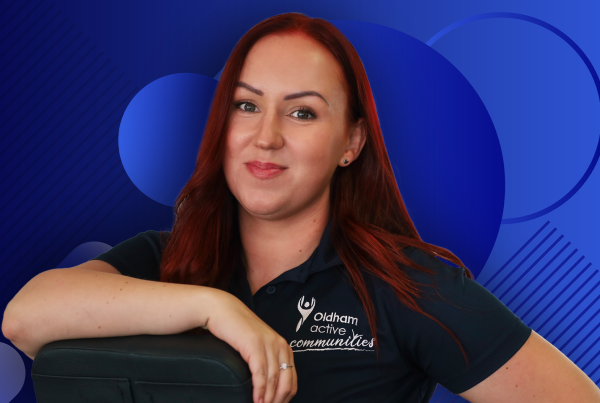By Dr Dane Vishnubala, Chief Medical Adviser, Active IQ
As COVID-19 restrictions ease and people are now being invited to use their common sense in respect of when to isolate and how to manage their symptoms, fitness fans may expect a speedy return to exercise. But is this wise? And how can fitness professionals work with the new freedoms, manage people’s expectations and ensure they make a safe return to activity?
There’s no doubt that physical activity will play a vital role in helping people get back on their feet after COVID-19. Provided someone’s symptoms were mild and they didn’t need any specialist medical or hospital treatment, it should be safe to return to exercise seven to 10 days after the onset of symptoms.
The Omicron variant certainly seems to be presenting fewer health problems, but we shouldn’t throw caution to the wind or discard the guidelines around returning to exercise. COVID-19 in all its forms can adversely affect our heart and lungs and even mild symptoms will affect our ability to exercise.
The general consensus for making a safe, gradual return to exercise was 10 days from the onset of mild symptoms. This has recently been reduced by some athletic bodies to seven days from the onset of symptoms. While this may be encouraging for some, let’s not forget these guidelines are all based on the experience of trained athletes in medically-supervised institutions. As fitness professionals, we need to interpret the findings and suggestions with care and caution when advising our clients and members who are ‘everyday exercisers’.
While some people may feel ready to return independently to exercise after seven days, others may need two to three weeks before resuming activity while seeking professional reassurance.
A word of warning
Returning to exercise after seven to 10 days only applies to people who had mild symptoms. Mild symptoms include a high temperature lasting less than 48 hours; symptoms lasting fewer than seven days.
Anyone who experienced a high temperature – over 37.8o – for two or more days, had COVID-19 symptoms lasting more than seven days, experienced chest pain, shortness of breath, palpitations, dizziness or a higher-than-normal resting or exercising heart rate should see a doctor before returning to exercise. Also, anyone who has Long COVID symptoms must realise they have a long-term health condition that needs medical attention before coming back to the gym or exercise classes.
However, newer guidance from the English Institute of Sport suggests that once symptom-free a person could return to their previous activity in a graded manner over 10 days.
COVID is still COVID
Many people consider the Omicron variant as ‘less dangerous’ than the previous variants because the symptoms in most people are mild. However, even if someone only had mild symptoms for a few days, they should return to exercise carefully and build up the length and intensity gradually. In addition, they will be advised to ‘listen to their body’. But what exactly does that mean?
Fitness professionals will recall learning about the Rate of Perceived Exertion (RPE) when training and some may still use this when working with clients. RPE is an ideal tool to help measure someone’s response as they return to exercise post-COVID.
To recap, these are the RPE levels:
6 = No exertion
7 = Extremely light exertion
9 = Very light exertion
11 = Light exertion
13 = Feels somewhat hard
15 = Feels hard
17 = Feels very hard
19 = Feels extremely hard
20 = This is maximum exertion.
When coming back to exercise after COVID-19 – and other illness or injury – it’s recommended to work in phases. Four or five phases should suit most people, with Phase 3 often repeated once or twice before moving on. For mild symptoms with an uncomplicated recovery, it seems reasonable to shorten the phases – during the height of early COVID-19 each phase was recommended to be seven days, although this was probably overly cautious and two to three days is the current consensus. This means that potentially once a person’s COVID-19 symptoms have resolved they could return to their previous activity levels in approximately 10 days if they have no issues.
Phase 1 –– RPE 6-8
Phase 2 –– RPE 9-11
Phase 3 –– RPE 12-14
Phase 4 –– RPE 15 – maximum
Quite apart from this being a safe and sensible way to regain physical fitness, working in targeted and manageable phases is mentally less daunting and more rewarding. Far better to achieve a realistic goal than ‘fail’ by attempting too much, too soon.
Alongside the RPE scale, instructors and PTs should advise people not to expect to pick up their fitness routine where they left off before being unwell.
In conclusion, I’d like to draw on a term we abide by in the medical world: ‘do no harm’. This can equally be applied in the leisure sector, especially in relation to returning to exercise while recovering from illness.
Of course, individuals should use their common sense and listen to how their body is feeling and responding to their return to exercise. But let’s not forget that gym managers, PTs and group exercise instructors have a responsibility to remain vigilant around clients and members who are returning to exercise post-COVID-19.
Active IQ is a member of the ukactive Strategic Partner Group – find out more here.
Disclaimer: Any views or opinions expressed are solely those of the author and do not necessarily represent those of ukactive.




